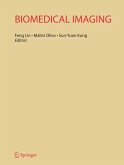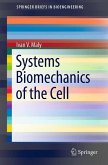The use of digital signal processing is ubiquitous in the field of physiology and biomedical engineering. The application of such mathematical and computational tools requires a formal or explicit understanding of physiology. Formal models and analytical techniques are interlinked in physiology as in any other field. This book takes a unitary approach to physiological systems, beginning with signal measurement and acquisition, followed by signal processing, linear systems modelling, and computer simulations. The signal processing techniques range across filtering, spectral analysis and wavelet analysis. Emphasis is placed on fundamental understanding of the concepts as well as solving numerical problems. Graphs and analogies are used extensively to supplement the mathematics. Detailed models of nerve and muscle at the cellular and systemic levels provide examples for the mathematical methods and computer simulations. Several of the models are sufficiently sophisticated to be of value in understanding real world issues like neuromuscular disease.
This second edition features expanded problem sets and a link to extra downloadable material.
This second edition features expanded problem sets and a link to extra downloadable material.
From the reviews of the second edition:
"This book is written in such a way by including some basic material on signals and systems so that students and/or researchers from these disciplines feel comfortable to go through the book. One of the excellent features of this book is providing solutions to exercises (including programming exercises, and Description of Computer Demonstrations) at the end of the book, which makes this book an ideal choice for self-study or for course adaptation. ... it is a good addition to this field ... ." (D. Subbaram Naidu, Amazon.com, June, 2013)
"This book is written in such a way by including some basic material on signals and systems so that students and/or researchers from these disciplines feel comfortable to go through the book. One of the excellent features of this book is providing solutions to exercises (including programming exercises, and Description of Computer Demonstrations) at the end of the book, which makes this book an ideal choice for self-study or for course adaptation. ... it is a good addition to this field ... ." (D. Subbaram Naidu, Amazon.com, June, 2013)








